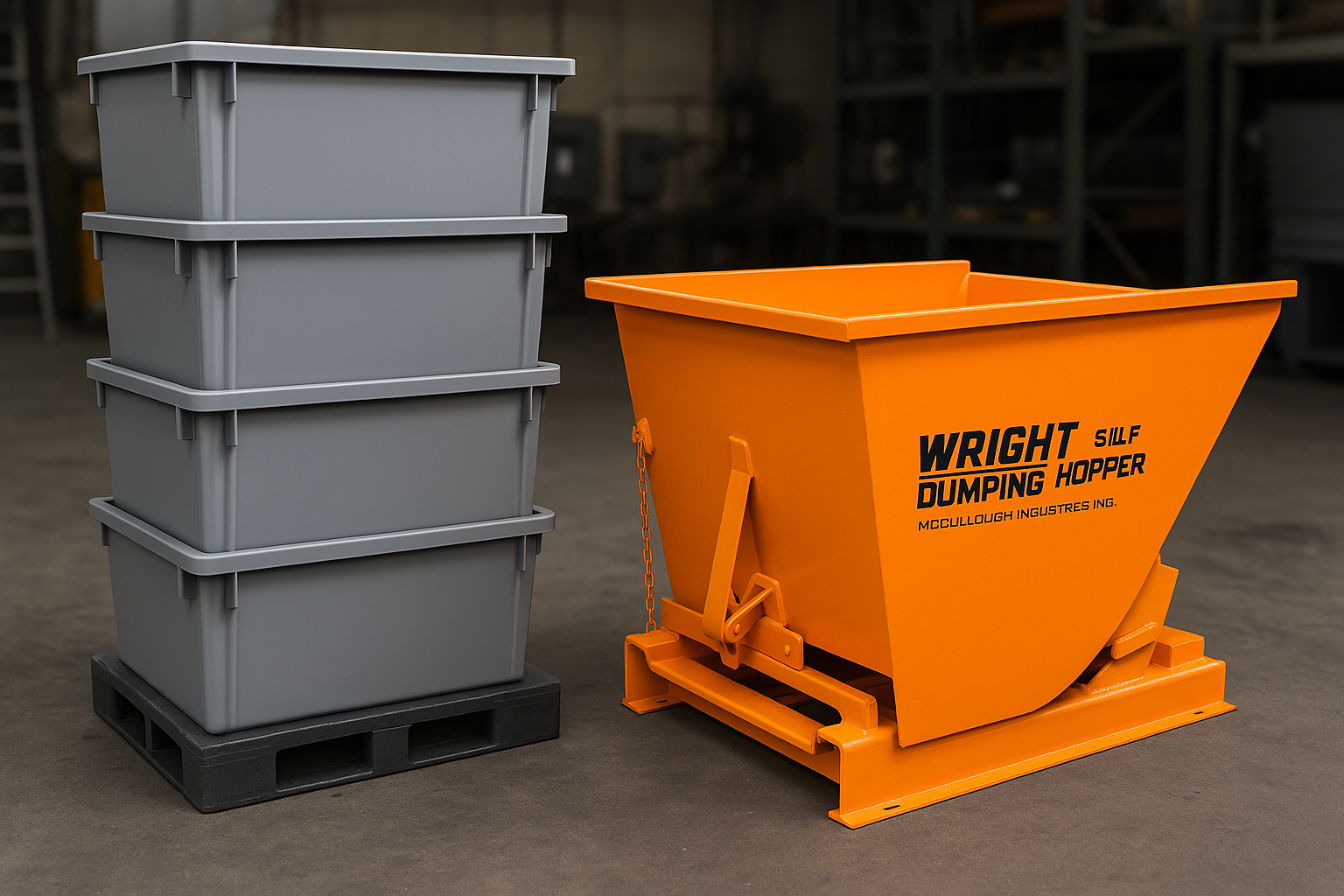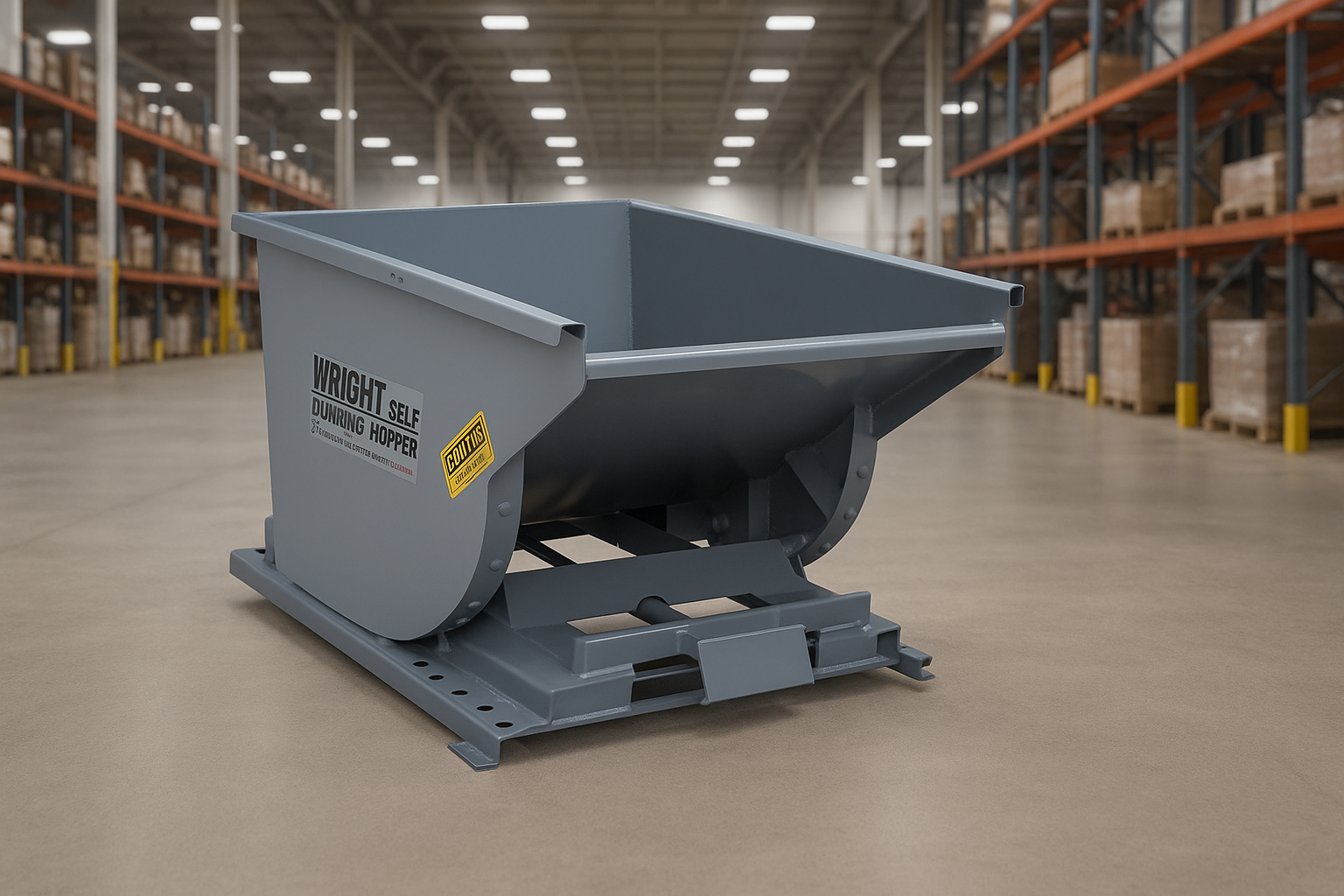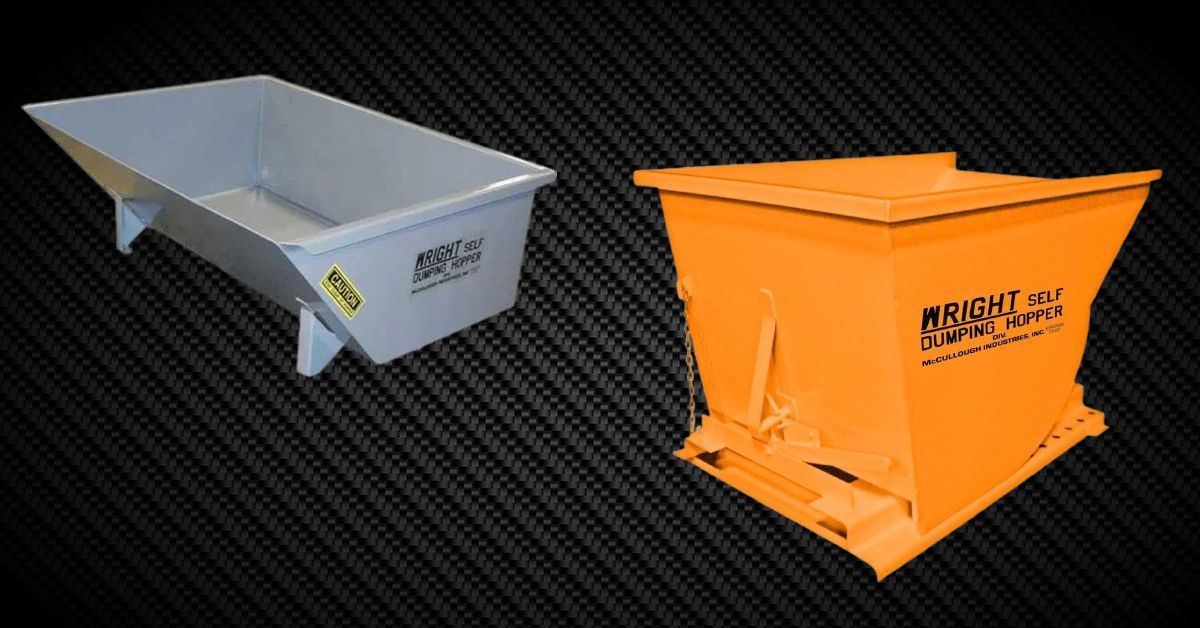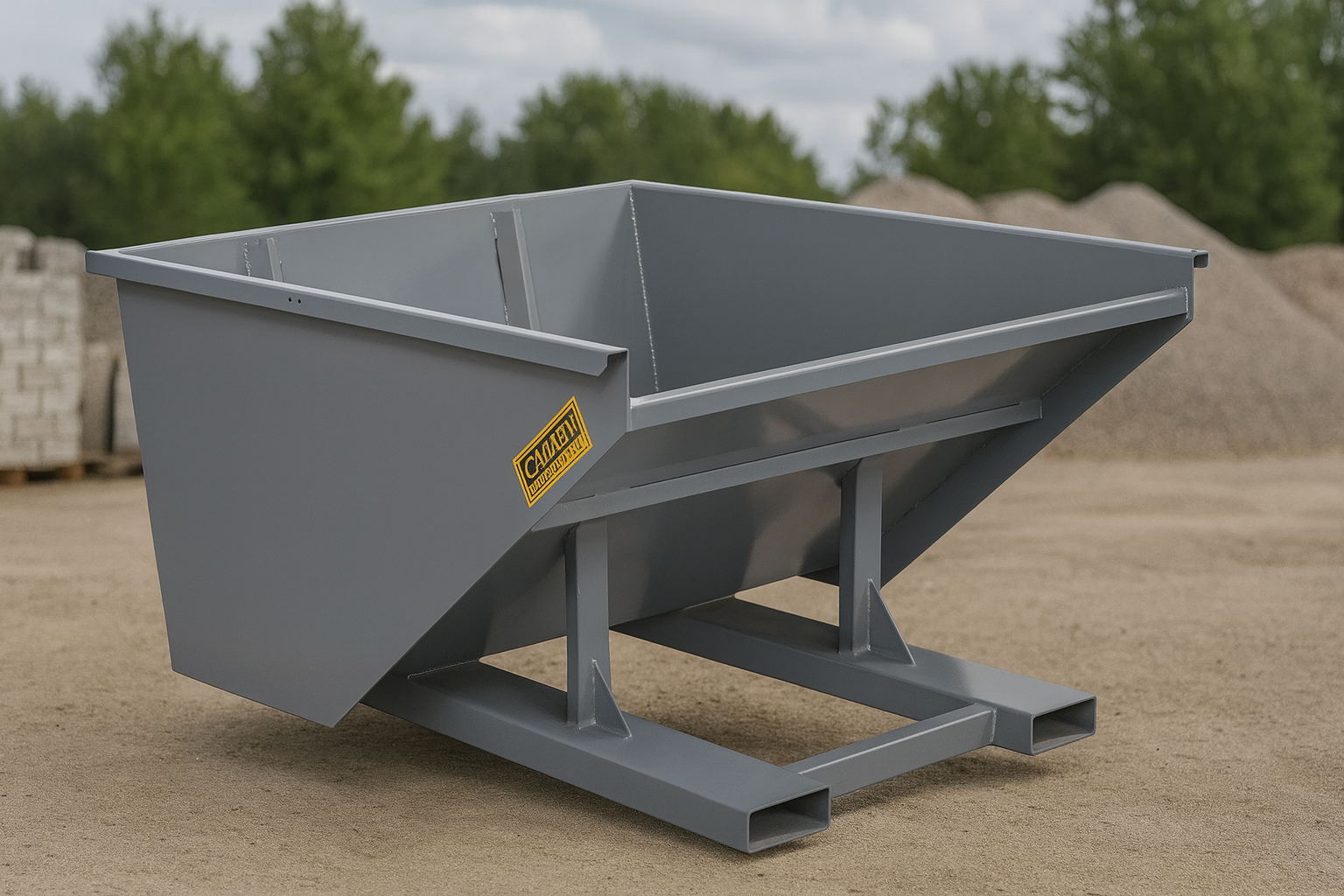
Understanding the Role of Material Handling Solutions
In any industrial facility, efficient material movement is essential. Whether it’s collecting machining debris, transporting bulk scrap, or staging production materials, the choice between stackable totes and traditional hoppers can significantly impact workflow, floor space, and operator safety. At McCullough Industries, we manufacture both options under the Wright® name to help you find the solution that fits your unique operation.
This guide compares stackable totes and traditional self-dumping hoppers to help you choose the best setup based on your volume, handling equipment, and environment.
What Are Stackable Totes?
Wright® Stackable Rotating Totes (SRTs) are compact, forklift compatible steel containers designed for precision dumping when paired with a rotator attachment. Built to nest or stack when not in use, they’re ideal for facilities where floor space and repeatability are key.
Features of Stackable Totes
Wright® SRTs are engineered for:
- Built-in fork pockets for safe, stable handling
- Rotator-compatible dumping, requiring no manual tipping
- Space-saving stackability when not in use
- Available capacities from 1/3 to 1.5 cubic yards
- Load ratings of 2,000 lbs and 4,000 lbs
- Full seam welds and rugged steel for long-term durability
What Are Traditional Hoppers?
Wright® Self-Dumping Hoppers include the GEN II, Low Profile, Quick Attach, and Bump Release product lines. These hoppers automatically dump and return to upright position, reducing downtime and operator effort.
Features of Traditional Hoppers
Traditional hoppers provide:
- Self-dumping action via latch or contact mechanism
- Auto-resetting for continuous use
- Load capacity from 1/4 to 6 cubic yards
- Available upgrades: drip trays, lids, safety chains
- Engineered dump angles for clean unloading
Stackable Totes vs. Traditional Hoppers: Comparison Table
| Feature | Stackable Rotating Totes | Traditional Self-Dumping Hoppers |
|---|---|---|
| Dumping Mechanism | Forklift rotator | Forklift latch or bumper release |
| Stackable | Yes | No |
| Space Use | Minimal when stacked | Larger footprint |
| Load Reset | Manual | Automatic |
| Ideal Location | Indoor production | High-volume scrap areas |
| Hopper Sizes | 1/3–1.5 cu yd | 1/4–6 cu yd |
| Max Capacity | Up to 4,000 lbs | Up to 7,000 lbs |
When to Use Stackable Rotating Totes
SRTs are especially useful in environments where lean production, workflow efficiency, and space optimization are priorities. Common applications include:
- CNC and machining stations
- Assembly and packaging lines
- Facilities using rotator-equipped forklifts
- Environments with limited storage space
Stackable totes allow for streamlined material handling, particularly where material types vary and frequent load changes are required.
When to Use Traditional Hoppers
Traditional hoppers serve best where durability, volume, and load flexibility matter most:
- Fabrication and welding shops
- Steel recycling and metal scrap handling
- Outdoor facilities with rough terrain
- Warehouses managing mixed material waste
For operations involving frequent dumping of dense or irregular material, the higher capacity and automatic dump/reset of traditional hoppers is key.
Impact on Safety, Labor, and Efficiency
- Stackable totes promote ergonomic material handling but depend on rotator equipment.
- Traditional hoppers simplify the dumping process with automatic reset, minimizing manual effort.
By reducing strain on operators and increasing material flow speed, both hopper types contribute to safer, more efficient workspaces.
How Each Option Impacts Floor Layout
Stackable totes provide a clear advantage in tight quarters. Their ability to be nested vertically allows you to maximize storage space. Traditional hoppers, while larger, offer more flexibility in volume and are ready to use with minimal configuration.
Real World Example: Dual Use Approach
Many McCullough customers use both options strategically. In one example, a mid-sized machine shop deploys:
- Wright® SRTs near CNC stations for chip and fluid-laden scrap
- GEN II Hoppers in the warehouse for large material loads
This setup allows for precision handling at the production level and bulk processing at the facility level.
Customization Options
McCullough Industries builds all Wright® units to spec. Available customizations include:
- Load ratings (up to 7,000 lbs)
- Drain plugs and coolant recovery features
- Safety lids, spill skirts, and drip trays
- Paint, galvanized, or powder-coated finishes
- Compatibility with specific rotators or attachments
FAQs: Stackable Totes vs. Traditional Hoppers
Can stackable totes replace all hoppers in a facility?
Not always. They’re ideal for precision use but may not have the volume capacity needed for central scrap management.
Are stackable totes OSHA compliant?
Yes, especially when paired with safe rotator handling and proper training. McCullough can add safety features such as chains or drip trays.
How do I know if my forklift can support a rotator?
We recommend reviewing your forklift’s capacity and consulting with your equipment provider. Our team can also help determine compatibility.
Which lasts longer: SRTs or traditional hoppers?
Both are built with heavy-gauge steel and continuous welds. Lifespan depends on the material being handled and the work environment.
How do I decide which one is better for my workflow?
Start with the material type, volume, and where the hopper will be used. Our team will help you analyze handling requirements and recommend the best fit.
Let’s Find Your Best Fit
Let’s Find Your Best Fit When it comes to material handling, the right solution improves safety, streamlines productivity, and helps your team operate more efficiently. Whether it’s stackable totes or traditional self-dumping hoppers, McCullough Industries offers the durability and flexibility your workflow demands. Let us help you spec the perfect unit.






